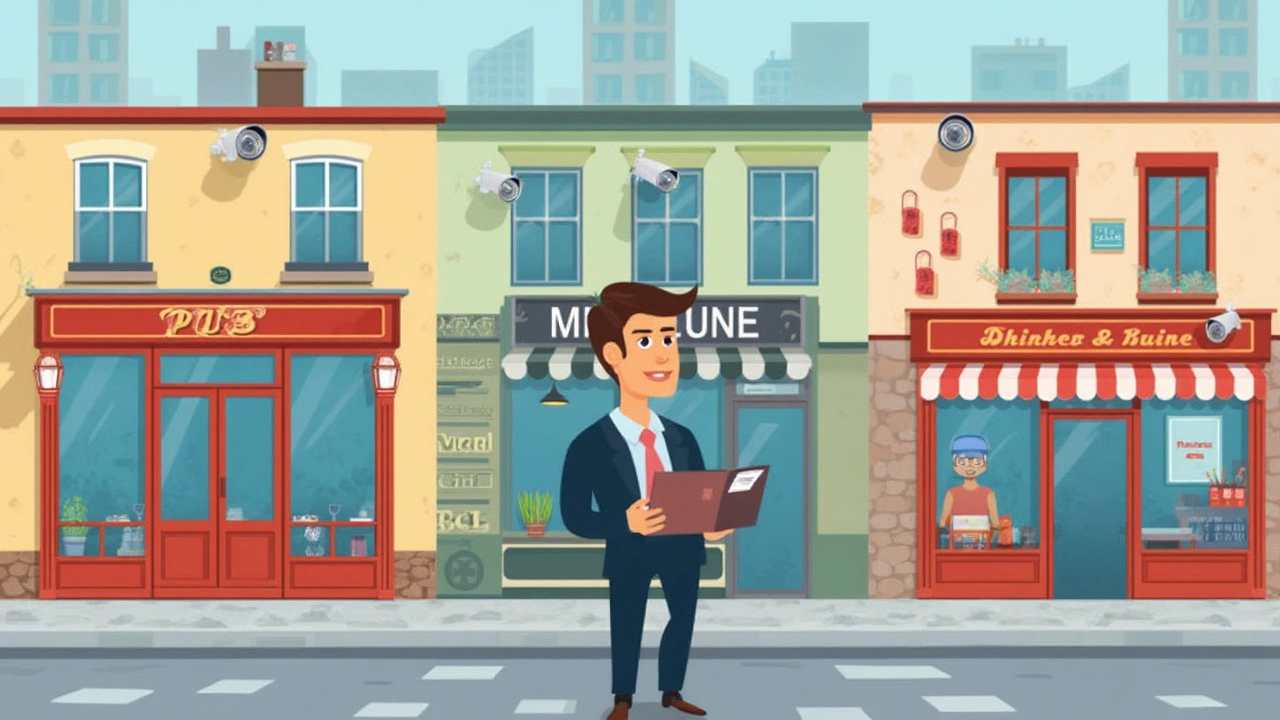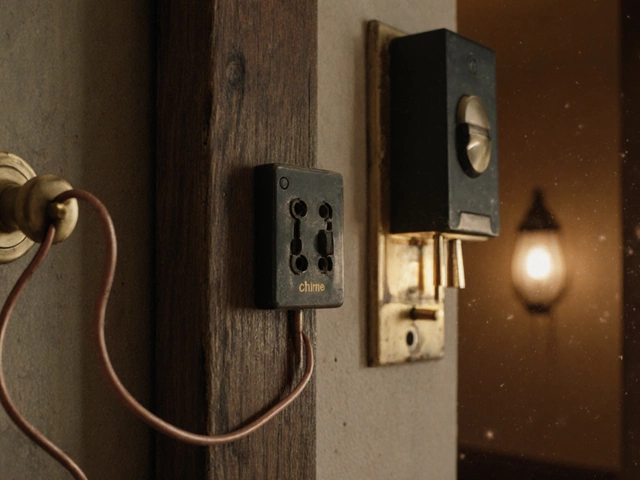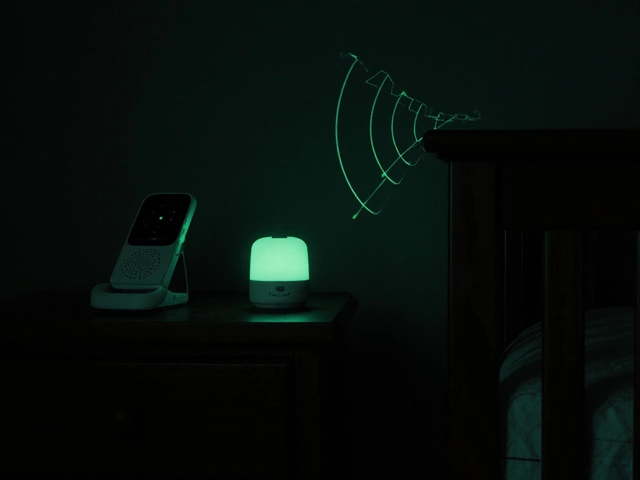CCTV cameras aren’t just for banks and shopping malls anymore. These days, you’ll see them tacked onto houses, garages, and small businesses everywhere. The big question isn’t whether they work — it’s whether they’re actually worth the cost for regular people.
Way too often, people jump into installing a system without knowing the real numbers. You could get stuck with a basic camera set for a couple hundred bucks—or drop several grand on high-end gear. But is spending more always better? Not really. What matters most is matching what you buy to what you need. That means more than just grabbing the fanciest set from the top shelf.
Before you open your wallet, think about what you actually want from a CCTV setup. Are you trying to scare off porch pirates, catch someone stealing your bike, or just check if the dog walker showed up? All these goals could look very different when it comes to installing, upgrading, and paying over time.
There’s also the hidden stuff no one talks about upfront—extra wires, cloud subscriptions, maintenance, and the pain of trying to DIY something that really should be installed by a pro. I’ll walk you through what to expect, so you don’t end up blindsided or with buyer’s remorse.
- What Do You Really Get With CCTV?
- How Much Does CCTV Installation Cost—And Why?
- Are CCTV Cameras Actually Effective?
- Common Mistakes That Cost More
- Saving Money and Getting More Out of Your System
What Do You Really Get With CCTV?
Let’s get straight to it: when you pay for a CCTV installation cost, what’s actually showing up at your front door? Most folks think it’s all about having an eye on everything 24/7, but there’s more to it—and not all of it is obvious until you set up your first system.
First, modern CCTV cameras give you way more than just grainy video. Almost every model today can stream directly to your phone, send instant alerts if something moves, or even save video clips in the cloud so you never lose proof. Got a remote cabin? Some cameras can even work with solar power and 4G to keep your setup going off the grid.
Security experts say there’s a real psychological effect too. Even a basic camera on your porch can scare off potential thieves. According to the UK’s College of Policing, homes with visible cameras are up to 50% less likely to get burgled compared to those with no cameras at all. Neighbors see them, crooks see them—they work as a warning sign.
In the words of the Association of British Insurers: “Visible CCTV cameras are a proven deterrent and make properties less attractive to criminals.”
But it’s not just about scaring people. You get:
- Live access to your feed from anywhere—work, vacation, or the grocery store.
- Automatic alerts anytime something moves in a set zone.
- Proof for the police if something actually does go down. This can speed up insurance claims or help catch a thief.
- Peace of mind. Sometimes, just glancing at your phone to see your pets are fine or your package arrived is worth it.
Don’t forget the extra features, depending on your system:
- Two-way audio, to shout at delivery guys or warn trespassers.
- Night vision for seeing what’s happening at 2AM.
- Smart detection, which can tell a person from a squirrel (most of the time).
Here’s a quick snapshot of what you might actually get out of your CCTV setup:
| Feature | How It Helps |
|---|---|
| Mobile Access | Check on home anytime |
| Motion Alerts | Get notified instantly for activity |
| Cloud Storage | No risk of losing key footage |
| Insurance Benefit | Sometimes lowers premiums |
| Evidence for Police | Makes investigations faster |
| Deterrent Effect | Reduces risk of break-ins |
The best part? You don’t need to spend a fortune to get the basics. Even budget setups today offer decent cameras and remote viewing. Flashier setups bring extras, sure, but most people need only a few solid cameras in smart spots to tick off every box that matters.
How Much Does CCTV Installation Cost—And Why?
Ask ten people what they paid for their CCTV cameras and you’ll hear ten different answers. Costs are all over the place, but there’s a method to the madness. The average price for a basic home CCTV system including installation? Around $500 to $1,000 in 2025. But that’s just the starting line. Things get pricey fast depending on what you want and where you live.
Let’s break down where your money actually goes:
- CCTV installation cost: Paying a pro will almost always give you a better setup and fewer headaches. Expect around $100-$300 per camera for labor if you’re in a city, maybe a bit less in smaller towns.
- Type of system: Wired systems need more work (and drilling), so they cost more to put in. Wireless is easier but sometimes less reliable for big places.
- Number of cameras: More cameras, more money. A four-camera system usually hits the sweet spot for a normal-sized home.
- Quality and features: 4K cameras, night vision, motion detection, and remote access all push up the bill. If you want license plate clarity, be ready to pay.
- Storage: Cloud subscription or local NVR/DVR box? Subscriptions add up over the years.
- Building type: Old houses or thick concrete walls usually mean more labor. Multi-story homes and businesses? Even pricier.
Here’s a quick way to see the cost range for typical setups:
| Setup | Camera Count | Installed Cost (USD) | Notes |
|---|---|---|---|
| Basic Home Kit | 2-4 | $400-$900 | Entry-level gear, decent image |
| Mid-Range Home | 4-8 | $900-$2,500 | HD cams, better storage, some pro install |
| Business-Level System | 8-16 | $2,000-$6,000 | 24/7 monitoring, high-def, extra features |
Small tip: Always ask for a site survey before paying anything. Installers can spot trouble spots or extra wiring costs you might never think about. And they tend to give better quotes when they actually see the job. DIY sounds cheaper but misses hidden costs like mounting kits, extra cables, and your own time.
Installation isn’t a one-time deal, either. Don’t forget about ongoing stuff—like those yearly software updates or replacing old hard drives. Heck, just cleaning the cobwebs off lenses makes a big difference. It all adds up faster than you’d think.

Are CCTV Cameras Actually Effective?
Let's get real: do cameras actually stop crime, or do they just record it? Most studies and police reports say CCTV cameras make a difference, but not in the way Hollywood shows. Cameras can scare off some thieves and troublemakers, especially if they know they’re being watched. In the UK, for example, businesses with visible cameras saw about 51% fewer break-ins, according to the British Security Industry Association’s report in 2023. Not a perfect fix, but not bad.
At home, it’s a bit of a mixed bag. Lots of police departments in the US say porch pirates and car thieves tend to avoid places with obvious cameras. In one case, the Dallas Police Department shared data from a city neighborhood that installed several cameras, showing reported thefts dropped by almost 28% over the next year. So, a camera won’t turn your house into Fort Knox, but it can absolutely tip the odds in your favor.
| Location | Reported Crime Reduction With CCTV |
|---|---|
| Retail Business (UK) | 51% |
| Residential Area (Dallas, USA) | 28% |
| Parking Lot (Canada) | 34% |
It’s not all automatic, though. What matters is how you install and use your cameras. Crooks love cheap, fake cameras, or those hidden behind leaves or bad angles. When setting up your CCTV cameras, actually put them where people can see them, and make sure you cover the spots thieves target most—like driveways, back doors, and porches.
- Make your cameras visible. Hide them, and you lose half their power.
- Keep the footage for at least one to two weeks. Some troublemakers plan ahead.
- Pair cameras with real lights and signs. A camera with a big warning sign equals double trouble for burglars.
- Check your system every month. If it’s not recording, you’re just wasting electricity.
One last fact: don’t expect cameras to catch every face perfectly. If you go cheap and the image is grainy, police might not be able to use it. HD cameras and a good setup mean clear footage—no more blurry blobs. All in all, are CCTV cameras effective? If you match what you buy to what you need and set them up smartly, they can help a lot more than you might think.
Common Mistakes That Cost More
Most folks who regret their CCTV setup made a few classic mistakes—simple stuff that ends up making the project a headache or a lot pricier than it needs to be. Let’s talk about where people trip up and how you can dodge those expensive errors.
The biggest one: buying cameras with features you’ll never use. Night vision, high zoom, or super fancy motion detection sound awesome, but if you’re just watching the front step, you might not need all that. Skip the unneeded extras and focus on what fits your goals.
Another costly slip? Skimping on storage. Cameras catch everything, sure, but if you don’t have enough memory, those crucial clips could get overwritten in a day or two. Think about how much footage you want to keep—usually at least a week’s worth is the sweet spot for homeowners.
Installation trips people up big time. Trying to cut costs by going DIY is tempting, but if wires are a mess or cameras point the wrong way, you’ll spend even more hiring someone to fix it. According to a 2023 HomeAdvisor survey, botched installations add an average of $400-$800 to the final bill because of call-backs and rework. Don’t forget about hidden costs like drilling, mounting brackets, or special weatherproof gear for outdoor cameras.
Then there’s overlooking ongoing fees. Lots of modern systems have cloud plans for storing video. They might only show you the first month’s cost up front. But if you’re not careful, that CCTV installation cost adds up with recurring payments.
- Skipping professional advice and ending up with more cameras than you actually need (and paying more for wiring, storage, and upkeep)
- Forgetting to factor in the cost of power supplies, surge protectors, or backup batteries
- Ignoring network requirements—some setups need better WiFi or even hardwired connections
- Installing in places with bad lighting or weird angles, making footage useless
- Neglecting to check local privacy laws, which can mean spending on changes or even fines
To make it even clearer, here’s a look at what some common mistakes can cost over a year, based on average US prices from 2024:
| Mistake | Potential Added Cost (Yearly) |
|---|---|
| Buying extra unneeded cameras | $150 - $400 |
| Cloud storage fees (unexpected) | $40 - $300 |
| DIY install mistakes | $400 - $800 |
| Wrong storage size (needs upgrade) | $100 - $250 |
| Ignoring power/network needs | $50 - $200 |
The lesson here: plan ahead, figure out exactly what you want your system to do, and get real about the ongoing costs—not just the sticker price for the cameras. It’ll save you from annoying surprises and wasted money down the line.

Saving Money and Getting More Out of Your System
There’s no reason to just accept the sticker price slapped on CCTV installation cost quotes. If you look around and ask smart questions, you can chop down extras without sacrificing what counts—your peace of mind.
First off, avoid upsells that you won’t use. A lot of installers will push features like night vision, 4K video, or motion alerts in every room. But do you really need to watch your garbage bins in ultra-HD 24/7? Make a list of spots you actually want covered, then focus your cameras there. Most homes get solid coverage with 2 to 4 cameras.
Here’s some small tweaks to keep cash in your pocket:
- Compare install quotes. Get at least three. Prices for the same setup can swing by hundreds, especially if you check independent installers against big chains.
- Mix and match brands. Some systems let you add cheaper third-party cameras. This can cut your total spend nearly in half if you already have compatible gear.
- Skip pro monitoring if you don’t need police response. Many people pay monthly fees for alerts they never act on. Most DIY setups let you watch from your phone for free.
- DIY installs can save $200–$500, but they’re only worth it if you’re handy and read the instructions. Mess it up, and you’ll pay double to fix it.
- Keep your storage local. Use an SD card or DVR instead of pricey cloud subscriptions if you don’t care about reviewing a month’s worth of footage.
According to market trackers, the average install price for home CCTV in 2024 sat around $1,225 in the US. Here’s a quick breakdown of typical costs:
| Item | Low | High |
|---|---|---|
| Basic 2-camera kit | $200 | $550 |
| Pro install (labor only) | $300 | $800 |
| Cloud storage (monthly) | $5 | $30 |
| Extra cameras (each) | $80 | $200 |
If you want the most for your money, a little time planning your setup goes way further than just throwing cash at the fanciest bundle in the store. Cover your blind spots, skip useless extras, and only pay for storage you’ll actually use. That’s how you get solid protection without wasting a cent.






